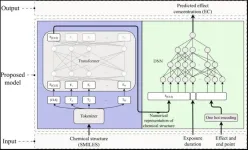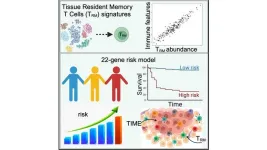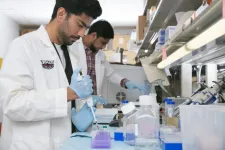As COVID-19 becomes endemic, an important group of people who continue to require vaccination is future birth cohorts of children. Yet, in the face of ever-changing variants, as well as the waning of antibodies with time after each dose, key questions remain: What is the threshold of immune response against SARS-CoV-2 needed to protect against COVID-19 and how many doses of mRNA vaccination are required to reach that threshold?
Researchers answered this question in a joint study conducted by the NUS Yong Loo Lin School of Medicine (NUS Medicine) and Duke-NUS Medical School. With parental consent and assent from child participants, the team enrolled 110 healthy children aged five to 12 years old into the MARkers of Vaccine Efficacy and Longevity in SARS-CoV-2 (MARVELS) study from 20 December 2021 to 8 March 2022, held at the National University Hospital (NUH). All participants received two doses of 10mcg Pfizer/BioNTech mRNA COVID-19 vaccination, 21 days apart.
The team followed up with the participants for one year, during which participants periodically donated blood to test for immune response to the vaccine: antibodies, memory B cells and T-cells. A proportion of the children received a booster dose five months after completing two doses, according to parental discretion. Parents also performed home Antigen Rapid Tests (ARTs) for their children when COVID-19 was suspected, and reported to the study team when the results were confirmed. ART-confirmed symptomatic SARS-CoV-2 infection was the clinical outcome of interest in this study.
The team found that rather than antibodies, which wane with time and whose protective capacity decrease in the face of variants, other arms of the immune system – T cells and memory B cells – provide durable protection against symptomatic SARS-CoV-2 infection. The amount of T cells and memory B cells are generated after two doses of mRNA vaccination, and their levels were not improved with a third, ‘booster’ dose.
The researchers – Dr Zhong Youjia, Assistant Professor Elizabeth Tham, and Professor Lynette Shek from the Department of Paediatrics at NUS Medicine, who are also consultants at the National University Hospital (NUH), and Professor Ooi Eng Eong from the Emerging Infectious Diseases Research Programme at Duke-NUS Medical School –investigated the duration of effective immunity against COVID-19 after vaccination, and sought to find out which arms of the immune response conferred protection against disease. The study is published in Nature Medicine. With a monthly readership of nine million people, Nature is the world’s multidisciplinary science journal, committed to publishing the most significant research discoveries of today to tackle the current challenges of society.
Dr Zhong, Senior Clinical Lecturer from the Department of Paediatrics at NUS Medicine and lead author of the study, said, “Just like how the air force, navy and army of a country’s defence forces work together to provide a layered protection against enemy forces, these three arms of the immune system also confer protection in layers—when an enemy like SARS-CoV-2 breaks through the first layer of neutralising antibodies due to viral mutations, T cells and memory B cells can equally protect against COVID-19. Importantly, T cells and memory B cells do not wane, and last for a long time.” A clinician scientist, Dr Zhong is a PhD candidate in the Emerging Infectious Diseases Research Programme at Duke-NUS Medical School on the A*STAR MBBS-PhD scholarship, and also a Visiting Consultant at the Khoo Teck Puat-National University Children’s Medical Institute, NUH.
The research team derived the following results from the study:
For protection against symptomatic SARS-CoV-2 infection, a very high amount of neutralising antibodies is needed, which can be attained only with hybrid immunity (immunity from two doses of vaccine and one natural infection). In fact, a third dose of vaccination cannot help an individual attain such high levels of neutralising antibodies.
Compared to acquisition of natural infection before completion of 2 doses, the quality of hybrid immunity was higher when natural infection was acquired after the completion of two doses of the vaccine.
Even without hybrid immunity, the memory B cells and T cell responses from mRNA vaccination alone effectively protect against symptomatic SARS-CoV-2 infection. This protection was seen even when the circulating Omicron strain differed significantly from the ancestral strain which was used to design the vaccine. Memory B cells and T cells store immunological memory, and can respond quickly when the immune system is challenged, even when the attacking virus has mutated.
In the case where the amount of neutralising antibodies was insufficient to prevent infection, the response provided by T cells was the single most important protective factor against symptomatic SARS-CoV-2 infection.
In their study, the scientists identified the minimum levels of antibodies, memory B cells and T cells needed to protect against symptomatic SARS-CoV-2 infection. The levels of memory B cells and T cells can be attained with two doses of mRNA vaccines whereas the levels of neutralising antibodies needed to prevent infection can, in most children, only be attained with hybrid immunity. The team thus created an “Onion model” to explain the layered protection provided by the immune system against the invading virus. This is a paradigm shift; rather than just using antibody levels to infer protection from COVID-19, T cell responses should be used instead.
Across the one-year follow up period of the study, memory B cells and T cell responses from two doses of vaccination remained stable with no signs of waning, and a third dose did not boost these responses. It may be deduced that: a) protection derived from 2 doses is lasting, and b) third and subsequent doses may not confer additional clinical protection.
In this study, healthy children, who received the third vaccine dose experienced more side effects, such as fever and pain, than with the first two doses.
Prof Ooi, the supervising scientist of the study, said, “This study provides evidence for clinical practice guidelines worldwide for the vaccination of future birth cohorts of children against COVID-19. The evidence supports a two-dose vaccination regimen for children.” Prof Ooi is also Associate Dean (Early Research Career Development) in the Office of Academic Medicine, Duke-NUS Medical School, and holds a joint Professorship at the Saw Swee Hock School of Public Health, National University of Singapore.
The study also found comparable immune responses in children compared to healthy adults. These findings do not apply, however, to children or adults who are more vulnerable to severe COVID-19, such as older adults and those living with chronic diseases or are immunocompromised. For them, third and subsequent doses of vaccination would still be beneficial. It is important to note that the findings of this study need to be replicated by other researchers, and other evidence, including clinical experience with populations, need to be carefully considered in determining the optimum policy for vaccinations in children and adults.
The research team has further plans to study why some children develop better T cell responses than others, since T cell responses have been identified to be the most important predictor of protection. They hope to identify those children with poorer T cell responses, and tailor vaccination regimes to their immune systems and improve the future design of mRNA vaccines.
Titled ‘Correlates of protection against symptomatic SARS-CoV-2 in vaccinated children’, the paper was published in Nature Medicine on 30 April 2024.
END






